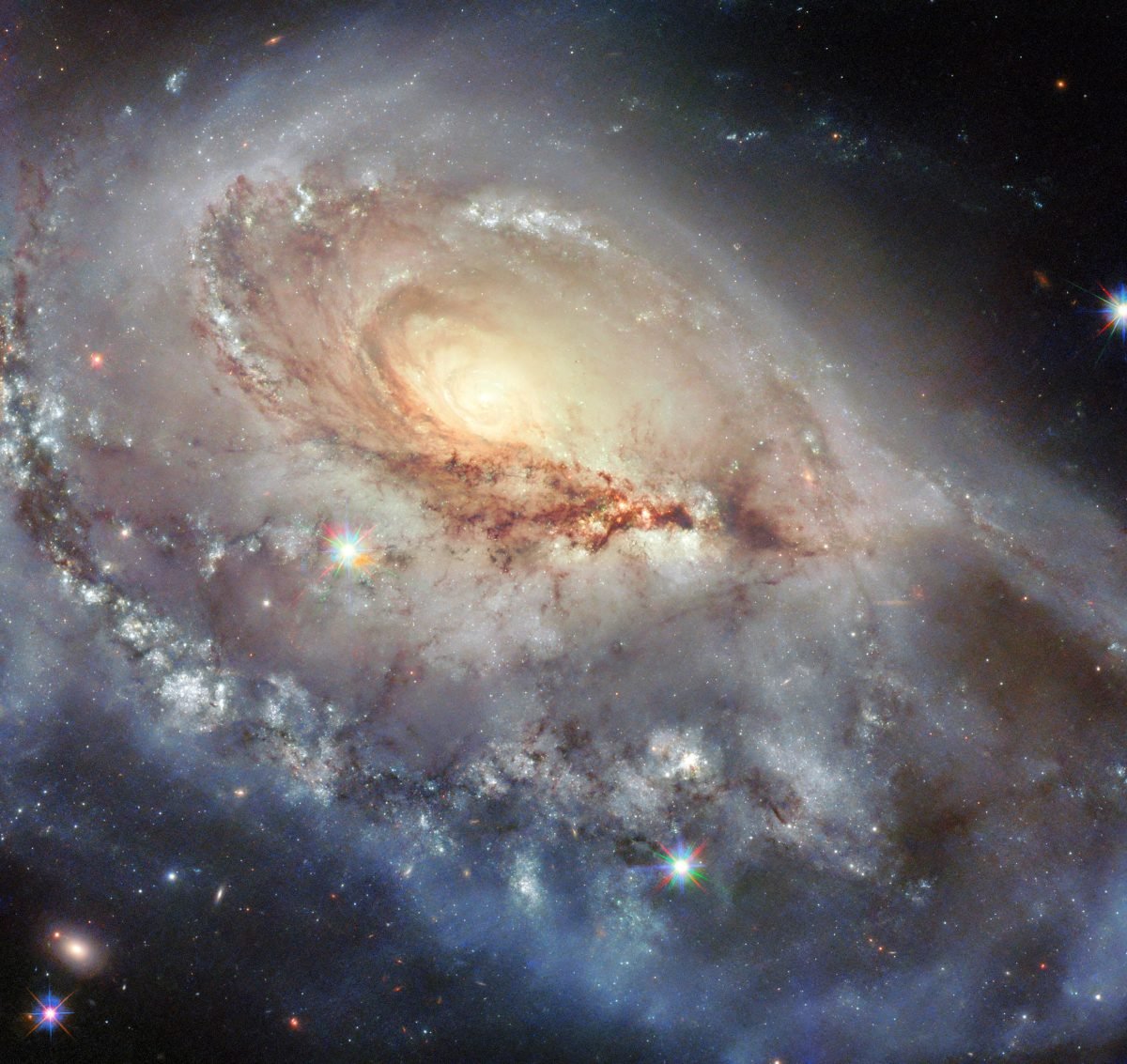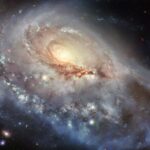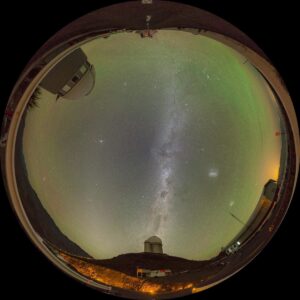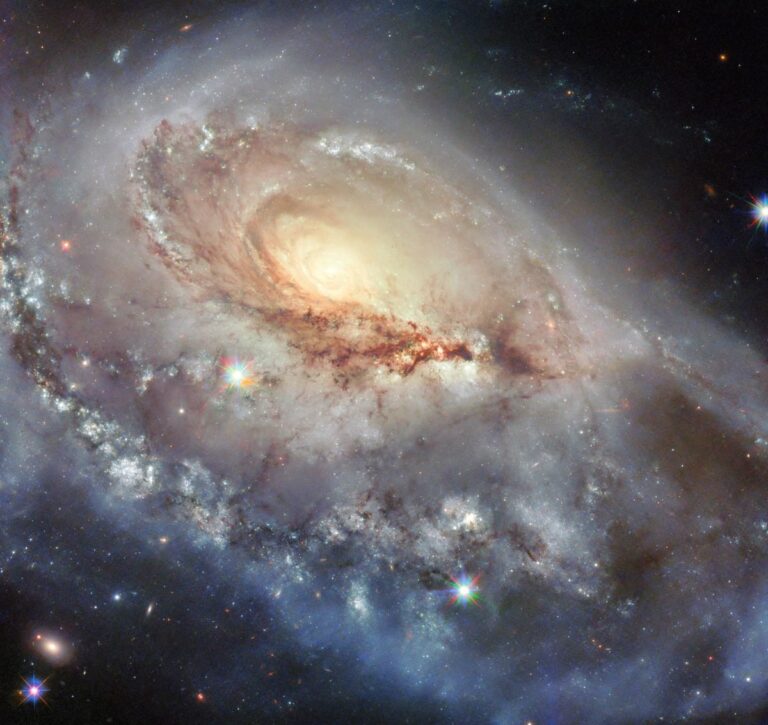NASA’s Hubble Space Telescope stuns the scientific world again with its breathtaking image of a rare, one-armed galaxy – a cosmic enigma that challenges what we know about galactic structure and evolution.
Introduction
In the vastness of space, galaxies come in many shapes and sizes—from majestic spirals to massive ellipticals. But every once in a while, the universe throws a curveball. Enter the “One-Armed Wonder”—a bizarre and captivating galaxy with a lopsided spiral arm structure that has left astronomers both intrigued and inspired. Thanks to NASA’s Hubble Space Telescope, we now have a detailed look at this cosmic oddity, and the results are nothing short of dazzling.
What Is the One-Armed Galaxy?
Officially known as NGC 4618, this galaxy lies around 21 million light-years away in the constellation Canes Venatici. Unlike typical spiral galaxies, which feature two or more symmetrical arms winding out from a central bulge, NGC 4618 appears to have just one prominent spiral arm—giving it a distorted, off-balance look.
This peculiarity is not just a visual trick; it’s a rare astronomical phenomenon. Astronomers classify such galaxies as Magellanic spirals, named after the Large Magellanic Cloud, a satellite galaxy of the Milky Way that also has a similar irregular structure.
Hubble’s Dazzling Image: A Window Into Chaos
The Hubble Space Telescope, which has been orbiting Earth for more than three decades, recently captured NGC 4618 in unprecedented detail. The image reveals:
Bright blue star-forming regions scattered along the lone arm
Dark dust lanes snaking through the galactic disk
A glowing central bulge filled with older, redder stars
Signs of gravitational distortion, suggesting past galactic interactions
This single-arm structure appears to twist dramatically around the galaxy’s center, forming a cosmic whirlpool that both defies expectations and invites deep scientific investigation.
Why Does It Have Only One Arm?
The exact reason behind the one-armed structure of NGC 4618 is still under study, but there are several theories:
Galactic Interaction: The galaxy may have had a gravitational encounter with a neighboring galaxy—such as its close companion NGC 4625—which could have pulled and stretched the spiral structure into an asymmetric form.
Dark Matter Influence: Irregularities in the galaxy’s dark matter halo might also affect how stars and gas are distributed, potentially warping its shape.
Internal Instabilities: An imbalance in mass or a disturbance in angular momentum within the galaxy could lead to the development of a single dominant arm.
Each of these factors highlights the complexity of galactic dynamics and the many unknowns that astronomers continue to explore.
Why This Image Matters: Science and Awe
This image from Hubble isn’t just eye candy—it has deep scientific implications:
Understanding Galaxy Evolution: Studying irregular galaxies like NGC 4618 helps scientists learn how galaxies grow, interact, and change over billions of years.
Clues to Cosmic Collisions: Galaxies often evolve through collisions and mergers. The twisted shape of NGC 4618 may be a snapshot of such a process in action.
Improved Models of Galaxy Formation: Observations like these refine our simulations and models of the universe’s large-scale structure.
For space enthusiasts, images like this serve as a humbling reminder of the universe’s vast creativity and mystery.
Fun Facts About NGC 4618 – The One-Armed Wonder
It spans about 25,000 light-years across—less than half the size of the Milky Way.
It’s located in a galaxy group known as the M94 Group.
Its one-arm structure has made it a favorite object for amateur and professional astronomers alike.
It’s often compared to the Large Magellanic Cloud, although NGC 4618 is more massive.
Hubble’s Legacy: Still Delivering Wonders
Even after 30+ years in space, the Hubble Space Telescope continues to transform our understanding of the cosmos. Its powerful optics and steady gaze allow astronomers to peer into distant and mysterious corners of the universe—capturing oddities like the One-Armed Galaxy and turning them into opportunities for learning and discovery.
While its successor, the James Webb Space Telescope, is now capturing infrared views of the early universe, Hubble remains essential for imaging visible-light structures like NGC 4618 with unmatched clarity.
Conclusion
The One-Armed Wonder—NGC 4618—is more than just an astronomical oddity. It’s a symbol of the unexpected beauty and complexity of the universe. Hubble’s recent image of this twisted galaxy invites us to look closer, wonder more, and celebrate the strange and stunning forms that galaxies can take. As we continue to explore the cosmos, stories like this remind us that the universe still has many secrets to share—and many more dazzling details to reveal.
The One-Armed Wonder: Hubble Captures a Twisted Galaxy in Dazzling Detail

















+ There are no comments
Add yours